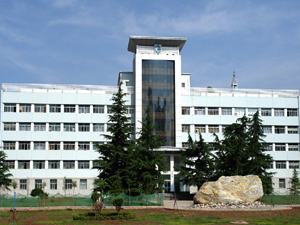中国科学院兰州化学物理研究所(简称兰州化物所)建成于1958年,由原中国科学院石油研究所(现中国科学院大连化学物理研究所)催化化学、分析化学、润滑材料三个研究室迁至兰州而成立,1962年6月启用现名。
兰州化物所主要开展资源与能源、新材料、生态与健康等领域的基础研究、应用研究和战略高技术研究工作。战略定位是“资源与能源化学和新材料西部创新研究基地”,力争建成具有“一流成果、一流管理、一流环境、一流人才”,特色鲜明,国际上有重要影响,中国不可替代并具有可持续发展能力的国立研究机构。
建所以来,经过几代科研工作者的艰苦努力、开拓创新,获得科技奖励242项,其中国家级奖励41项(含第一完成单位获国家科技进步特等奖1项)、省部级一等奖37项,为国家经济建设、科技事业发展,特别是中国石油化工及战略高技术发展做出了重大贡献,同时在催化、润滑和摩擦学理论以及分离分析科学与技术等方面做出了一系列创造性的贡献。

Lanzhou Institute of Chemical Physics, Chinese Academy of Sciences (hereinafter referred to as Lanzhou Compounds Institute) was established in 1958. The three laboratories of Catalytic Chemistry, Analytical Chemistry and Lubricating Materials of the former Institute of Petroleum, Chinese Academy of Sciences (now Dalian Institute of Chemical Physics, Chinese Academy of Sciences) were moved to Lanzhou. It was inaugurated in June 1962.
Lanzhou Institute of Chemical Sciences mainly conducts basic research, applied research and strategic high technology research in the fields of resources and energy, new materials, ecology and health. It is strategically positioned as "Resource and Energy Chemistry and New Materials Innovation and Research Base in Western China", and strives to build itself into a national research institute with "first-class achievements, first-class management, first-class environment and first-class talents", with distinctive characteristics and important international influence, which is irreplaceable and capable of sustainable development in China.
Since its establishment, through the hard work and innovation of several generations of researchers, the institute has won 242 scientific and technological awards, including 41 national awards (including 1 national scientific and technological Progress Grand Prize for the first unit) and 37 provincial and ministerial level first prizes. It has made great contributions to the national economic construction and the development of science and technology, especially the development of China's petrochemical industry and strategic high technology. At the same time, he has made a series of creative contributions in catalysis, lubrication and tribology theory and separation analysis science and technology.